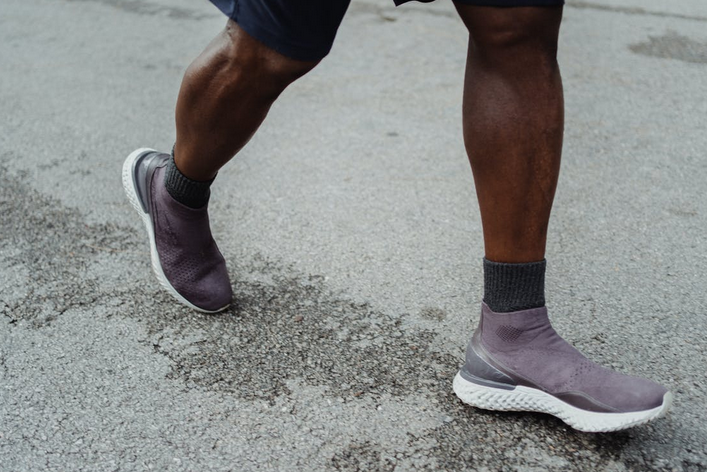Overpronation: Symptoms and Treatments
If you are experiencing pain in your feet, ankles, or knees, you may be suffering from overpronation. Overpronation occurs when the foot excessively rolls inward during weight-bearing activities such as walking or running. This can cause a variety of problems, including pain and discomfort. This is why people experiencing it are advised to wear walking shoes for overpronation. Here, we will discuss the symptoms of overpronation and how to treat it.
Heel Pain
 One of the most common symptoms of overpronation is heel pain. This can be caused by the foot’s excessive inward rolling, which puts extra stress on the heel. Achilles Tendonitis: Overpronation can also lead to Achilles tendonitis, which is a condition that causes inflammation and pain in the Achilles tendon. The tendon becomes irritated and inflamed due to excessive stress. Plantar fasciitis is another common condition associated with overpronation. It is a condition that causes pain in the bottom of the foot. The plantar fascia can become inflamed and painful.
One of the most common symptoms of overpronation is heel pain. This can be caused by the foot’s excessive inward rolling, which puts extra stress on the heel. Achilles Tendonitis: Overpronation can also lead to Achilles tendonitis, which is a condition that causes inflammation and pain in the Achilles tendon. The tendon becomes irritated and inflamed due to excessive stress. Plantar fasciitis is another common condition associated with overpronation. It is a condition that causes pain in the bottom of the foot. The plantar fascia can become inflamed and painful.
Flat Feet
If you have flat feet, you may be more susceptible to overpronation. Treatment for this condition includes wearing supportive shoes and using arch supports or orthotics. Orthotics are devices inserted into the shoes to help support the foot’s arch. Surgery: In some cases, surgery may be necessary to correct the problem. This is usually only recommended if other treatments have failed. If you are experiencing any of these symptoms, it is important to see a doctor. They will be able to diagnose the problem and recommend the best course of treatment. Overpronation can be a painful condition, but fortunately, many effective treatment options are available.
Hammer Toes
 Another common symptom of overpronation is hammertoes. This occurs when the toe bends downward at the middle joint, causing it to resemble a hammer. This can cause pain and difficulty in moving the affected toe. Treatment is typically focused on relieving the pain and discomfort associated with the condition. Wearing supportive shoes and using toe splints or pads can help to alleviate the symptoms. Surgery is rarely necessary.
Another common symptom of overpronation is hammertoes. This occurs when the toe bends downward at the middle joint, causing it to resemble a hammer. This can cause pain and difficulty in moving the affected toe. Treatment is typically focused on relieving the pain and discomfort associated with the condition. Wearing supportive shoes and using toe splints or pads can help to alleviate the symptoms. Surgery is rarely necessary.
If you’re experiencing any of the symptoms of overpronation, it’s important to consider whether or not this is the root of your issue. Book an appointment with a podiatrist to get properly diagnosed and start on the road to recovery. In the meantime, make sure you’re wearing supportive shoes that cushion your feet and try out some simple stretches and exercises to help correct your pronation. Thanks for reading.…

